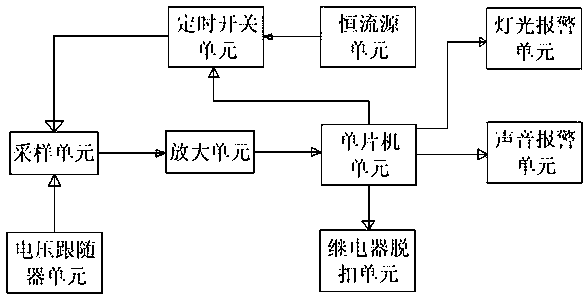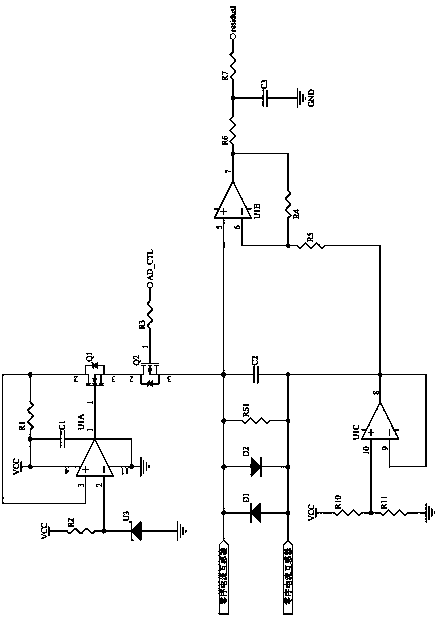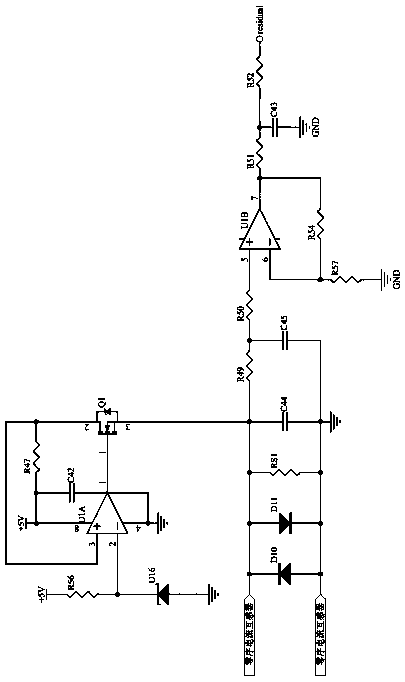Zero sequence current transformer wire-break detection and residual current detection circuit
A technology of residual current and zero-sequence current, applied in the direction of measuring current/voltage, instrument, measuring electricity, etc., can solve the problem of residual current waveform distortion, etc., and achieve the effect of wide practicability
- Summary
- Abstract
- Description
- Claims
- Application Information
AI Technical Summary
Problems solved by technology
Method used
Image
Examples
Embodiment Construction
[0019] Embodiments of the present invention will be further described below in conjunction with accompanying drawings:
[0020] Such as figure 1 , figure 2 As shown, a zero-sequence current transformer disconnection detection circuit and a residual current detection circuit include a constant current source unit for providing a constant current; an amplification unit for amplifying the input voltage; a sampling unit, It is used to convert the current signal into a voltage signal; the two ends of the sampling unit are respectively connected to the positive and negative input terminals of the amplification unit. After the constant current source unit is connected in parallel with the sampling unit, it is connected to the input terminal of the amplification unit. There is a switch unit between the flow source unit and the sampling unit, and also includes a control unit, which is used to judge that the detected residual current value is zero, then the output signal turns on the ...
PUM
 Login to View More
Login to View More Abstract
Description
Claims
Application Information
 Login to View More
Login to View More - R&D
- Intellectual Property
- Life Sciences
- Materials
- Tech Scout
- Unparalleled Data Quality
- Higher Quality Content
- 60% Fewer Hallucinations
Browse by: Latest US Patents, China's latest patents, Technical Efficacy Thesaurus, Application Domain, Technology Topic, Popular Technical Reports.
© 2025 PatSnap. All rights reserved.Legal|Privacy policy|Modern Slavery Act Transparency Statement|Sitemap|About US| Contact US: help@patsnap.com



